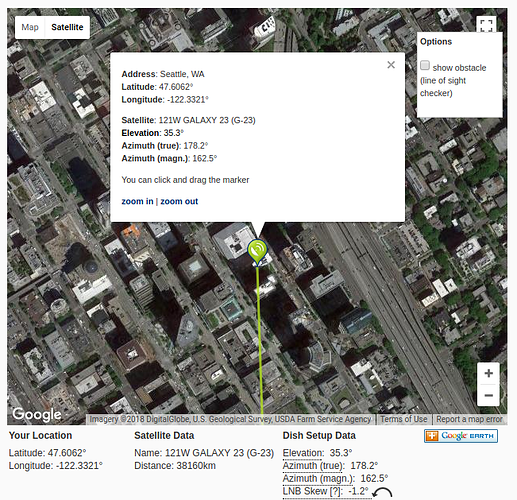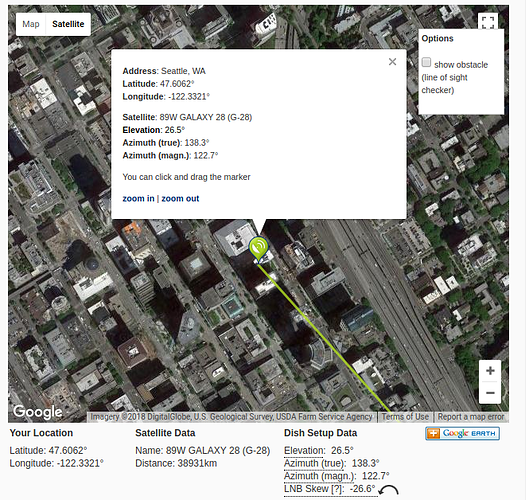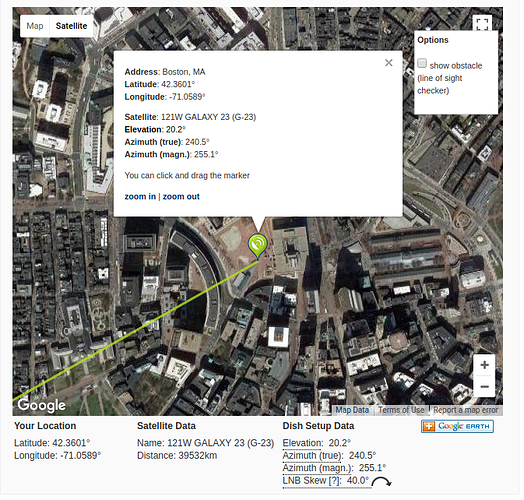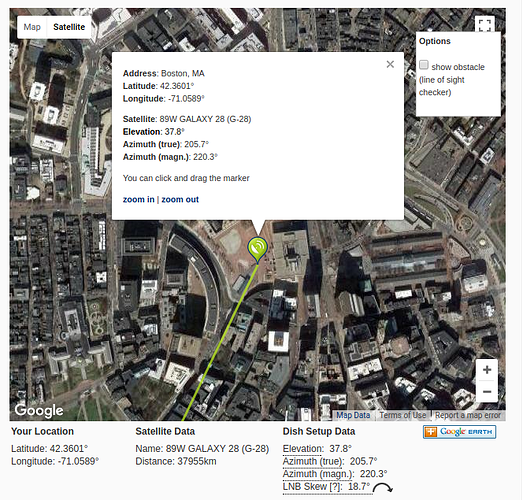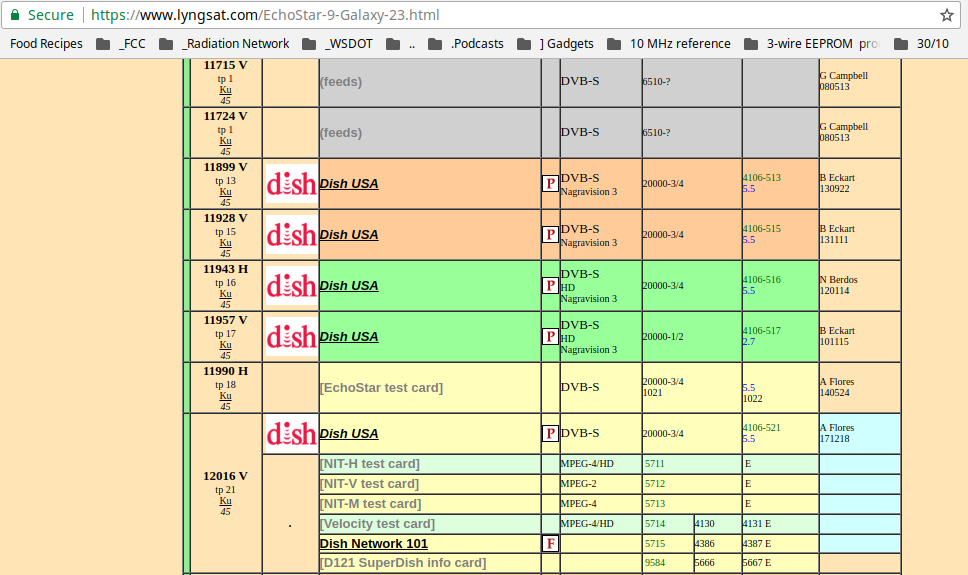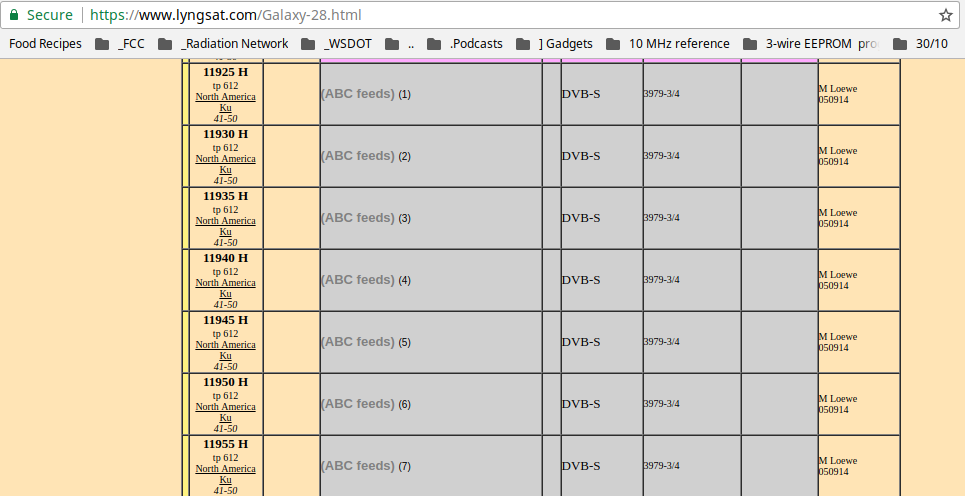@KR1ZAN We’ve done something like this in the past, for a project that provided an early warning system. I don’t have any additional thoughts about it just yet, as we are really focused on getting our first small batch production of DC3 out the door.
@ac8dg The real question here is elevation angle. The problem with low look-angles is that it’s very easy for a building to be in the way.
I checked again other sources for Galaxy 28’s South American Ku-band footprint, and they all show Ku band transponders.
If correct, would that cost you two times a NA transponder? Ken
Adding SA Ku would not be twice the price of NA. We can assume that it is the same price per-MHz. So if NA is X, then adding SA would be a total cost of 2X. Each part of the world that we add is just another X.
@Syed
So will the “antenna” be a bare LNB, or an LNB with something attached Eg. a feedhorn?
The reason I ask is in case we use a satellite with a low angle to the horizon for me and possible to the east, I need to figure out how to mount the LNB (assembly) up high on the roof to get some elevation. This is something I can solve before the DC3 kit comes out.
–Konrad, WA4OSH
The first antenna will literally be the Maverick MK1
And, I would never use my DOB reflector telescope without a parabolic dish. I’m sorry astronomers, I mean mirror!  Without such, it might as well be an 8" diameter pipe section. Not trying to distract anyone. Back to work at hand.
Without such, it might as well be an 8" diameter pipe section. Not trying to distract anyone. Back to work at hand.
So my idea is to mount it using a satellite TV dish bracket or something similar which in turn is fastened to a device/bracket/thingie which allows the setting of azimuth and elevation. In turn the “thingie” attaches to the eave of a house, a chimney or a vertical pole attached to the top of the house.
–Konrad, WA4OSH
What is the planned coax connector for the first batch DC? sma or type F ?
We will include an F-SMA adapter.
So you are expecting the customer to supply the xx feet of 3.0 GHz RG-6/U cable with a F-Male at both ends
and you will supply the F-Female to SMA-Male adapter. Fantastic.
–Konrad, WA4OSH
Yes, that is correct.
I have spent a little more time sighting look angles for 121W. My qth location at 45.05N puts the elevation at 27.6 deg. I will definitely be looking through deciduous foliage even from the second floor of my house. So I ask a question…?? What signal attenuation is going to occur for 11 GHz passing through two or three full size (typical 60 ft sugar maple) trees?
My options appear to be 1-elevate the antenna by 10 ft above the two story roof. or 2-expect to need a dish to improve my path loss with higher gain.
As a note: the L-band 1.5 GHz signal immarsat F-3 was at a 36.8 deg elevation and it worked being partially obscured by vegetation.
ES9/G23 from Michigan
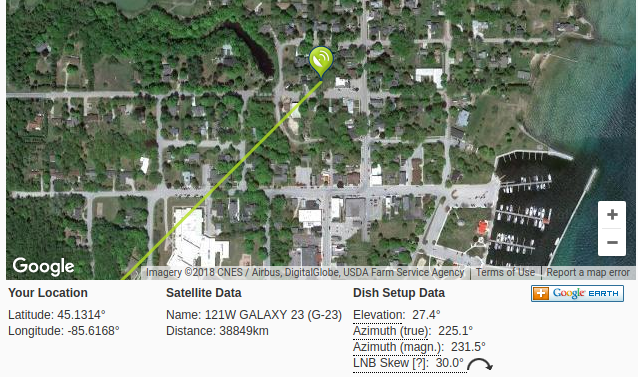
G28 from Michigan
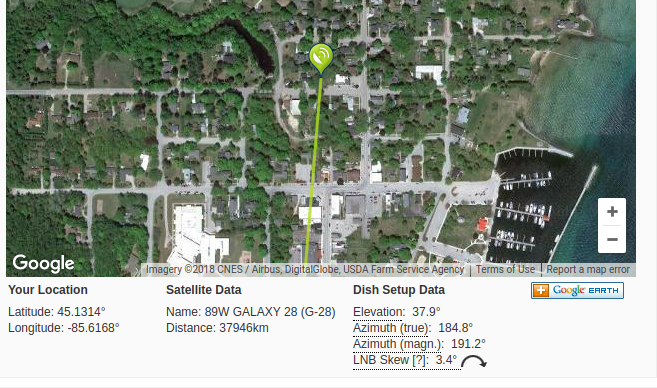
ES9/G23 from Seattle
G28 from Seattle
ES9/G23 from Boston
G28 from Boston
The low elevation for (G28 at 26.5 deg) is difficult from here in the Seattle area as well due to trees and mountain ridges. But I’m more concerned about EIRP values. They are important to get an adequate link budget.
Downlink frequency GHz 12.0
Downlink receive antenna diameter m 0.03
Downlink receive antenna aperture efficiency e.g. ?
Downlink system noise temperature (antenna+LNA) K ?
Downlink receive antenna gain dBi ?
Downlink receive antenna G/T dB/K ?
Downlink satellite EIRP dBW 41-50
Downlink path loss dB ?
Downlink C/N dB XXX?
-===EIRP===-
ES9/G23 from Seattle – 42
G28 from Seattle – 41-50
As you can see, even though G28 is 10 degrees lower to the horizon, it’s a better signal for me in the Seattle area, assuming of course that I have a good line of sight.
I can’t get Lyngsat to cooperate in order to give me the EIRP values for Michigan and Boston. I’m at the west end of i-90, you are somewhere in the middle and Boston is on the east end.
Everything further south is of course better.
–Konrad, WA4OSH
@Konrad_Roeder How did you come up with 42 dBW for Seattle on ES9. The contours are pretty even throughout the US and Mexico and a transponder is 48 dBW.
I’m reading the figures from Lyngsat. My bad, I should have read the Ku value, not the C value.
ES9/G23 45
G28 41-50
–Konrad, WA4OSH
I have a Maverick MK1-PLL LNB, and several different SDR dongles. I guess I could measure the received C/N on a couple of reference carriers here. I sure wish I had a calibrated reference source and some real test equipment.
–Konrad, WA4OSH
Syed, what’s the next announcement date?
Next announcement will be at the end of this month, when we will have 100 Dreamcatcher-3 available, as well as a live signal over North America. With that announcement, we’ll also have a more technical description of what we are doing on Ku.
First - Reserve one for me! 
–Konrad, WA4OSH
